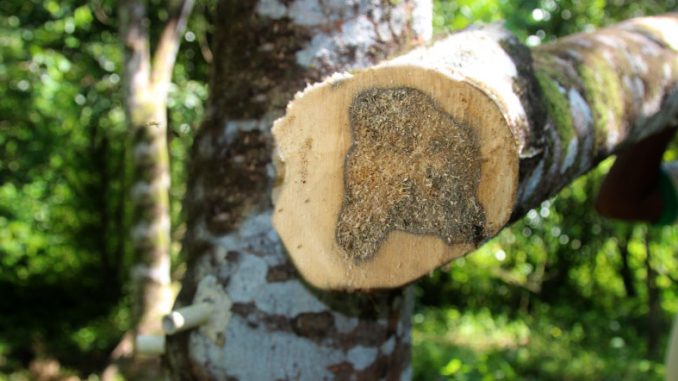
The Aquilaria malaccensis tree, which produces one of the world’s most valued woods, moved from ‘vulnerable’ to ‘critically endangered’ as logging and deforestation caused population to decline by more than 80% over the past 150 years, the IUCN said.
New Delhi: The agarwood tree (Aquilaria malaccensis), whose resin extract is widely used in perfumes and incense, is one step away from being declared extinct in the wild by the International Union for Conservation of Nature (IUCN).
The IUCN, an international organisation which maintains an authoritative database on the status of species, called the red list, issued an update this week and moved the species from the vulnerable to the critically endangered category.
“The Aquilaria malaccensis tree, which produces one of the world’s most valued woods, moved from ‘vulnerable’ to ‘critically endangered’ as logging and deforestation caused population to decline by more than 80% over the past 150 years,” the IUCN summary said.
The red list places flora and fauna species in seven categories: extinct, extinct in wild, critically endangered. endangered, vulnerable, near threatened and least concern.
The agarwood tree is native to Northeast India, Bangladesh, Bhutan and parts of Southeast Asia. It is an evergreen tree that can grow to 40 metres. “Because it is an economically attractive species, so there is over exploitation,” Purabi Saikia, a researcher at Central University of Jharkhand said.
Some researchers believe it is already almost extinct in the wild in Assam. What has aggravated the loss is the particular way in which agarwood is produced. It is only when an Aquilaria tree becomes infected by a mould, does it produce a dense fragrant resin to protect itself.
Because poachers are unaware which trees are infected, they chop down healthy trees also. In a plantation of 100 trees, only about 10 have the aroma, say experts. Since the population is already exploited, people are increasingly growing them in private and commercial plantations, Saikia said.
However, the quality of the agarwood produced this way is believed to be inferior. “In India, agarwood has a special place, especially in religious rituals. It is also mentioned in literature…” Supriyo Sen, a researcher at the Institute of Advanced Study in Science and Technology, Guwahati said.
In the latest IUCN update, 54 species from India were assessed for the first time. The threat to tree species in the Northeast points to a more worrying trend.
Though India’s forest cover registered a marginal increase between 2015 and 2017, the latest state of forest report, also showed that states in the Northeast either recorded a decline or no increase in their forest cover in that period.
Source: Hindustan Times

Leave a Reply